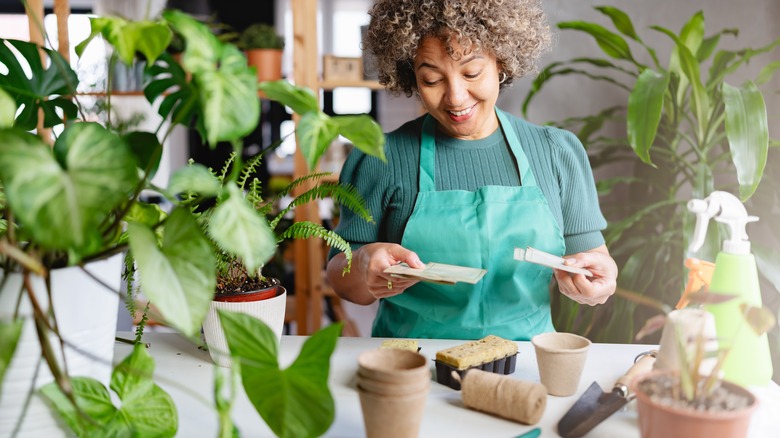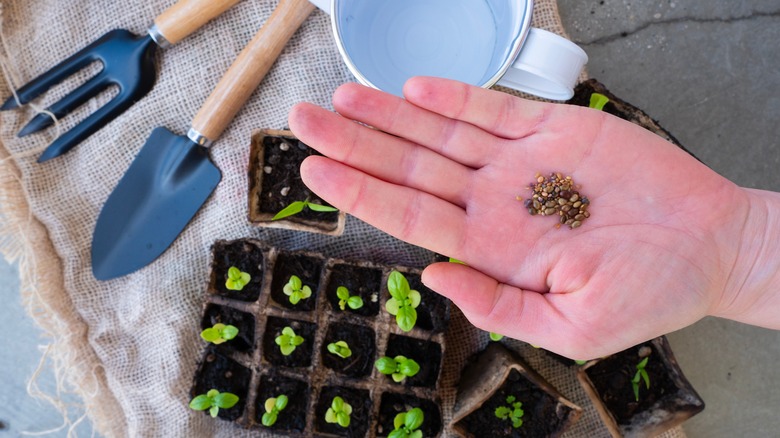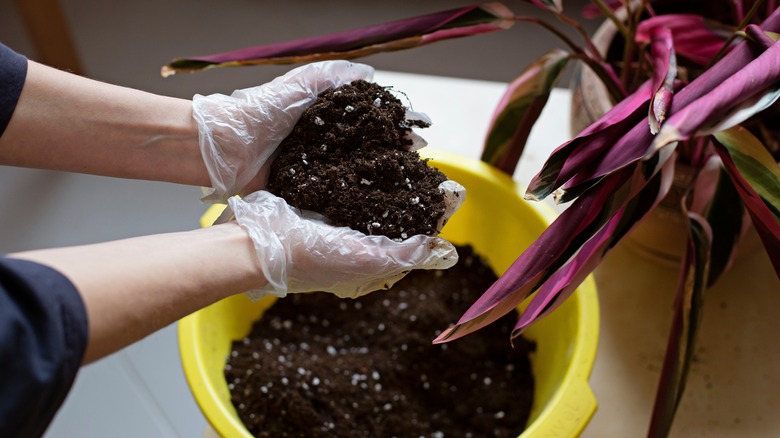Do You Need Seed-Starting Mix? Here's What Gardeners Should Know
Gardeners have been using seed-starting mix for many years for germinating the seeds that they want to grow. The mix is specially formulated to aid in effective seed germination by holding enough moisture while also being free-draining. You'll find that seed-starting mix has relatively fine particles and doesn't contain any large chunks that could inhibit young, tender root growth. But, you don't necessarily have to use seed-starting mix for successful seed germination. There are alternatives that you can use as long as you make a couple of amendments.
For easy germination, most seeds need both moisture and warmth. But it's important that the medium is never waterlogged and can drain freely. Too much moisture can actually suffocate the young roots as they grow because plant roots need air as well as water. That's why seed-raising mixes contain not only ingredients to hold moisture but also other ingredients that aid in providing air spaces for the roots. Let's look at the composition of typical seed-starting mixes and discuss what else you could use for germinating seeds.
What are seed-starting mixes?
Until recently, seed-starting mixes were mainly composed of peat, perlite, and vermiculite. Peat is a natural product that holds moisture in the mix. It's harvested from peat bogs, primarily those in Canada and Russia. However, in recent years, there has been much concern about the degradation of these bogs due to the overharvesting of the peat moss. Peat bogs take large amounts of carbon from the atmosphere and store it. When the peat is harvested, the carbon is released back into the atmosphere, and this has contributed to global warming. For this reason, alternatives have been sought, with the most common one being coco coir. The difference between peat moss and coco coir is that the latter is a byproduct of the coconut industry and is just ground-up coconut husk fibers.
Perlite is a volcanic rock that's very lightweight. It's important because it increases the air spaces in the seed-starting mix and facilitates better drainage. Vermiculite is a mineral that forms plate-like particles when heated to a very high temperature. These particles have the capacity to both hold moisture and form air spaces in the mix. It has the added advantage of supplying magnesium and potassium to the roots of plants. When mixed together, these three ingredients create a disease-free mix that's ideal for germinating seeds. Now that you understand the composition of seed-raising mixes and why these ingredients are important, you could use some alternatives by making a few amendments.
Alternatives to seed-starting mixes
There are different mediums that you can use to germinate seeds instead of seed-starting mixes. For example, you could use a regular potting mix you might already have at home by just making a few amendments. The difference between potting soil and seed-starting mix is that the former contains larger chunks of materials, such as bark or wood chips. Therefore, the first thing you want to do is sift the mix to remove any of these large chunks. This helps to create a finer mix for the young roots to grow easily. You can improve this even further by mixing in some coco coir and perlite or vermiculite. Coco coir is fairly inexpensive and is available in compressed bricks that you add water to until it expands. Both perlite and vermiculite are available in bags from your local garden center.
Mix around two parts of sifted potting soil with one part of coco coir and one part of either perlite or vermiculite for a nice, fluffy mix that will hold enough moisture but also be free-draining. Another alternative is to use any homemade compost that you might have on hand. Be sure to sift this to remove any large particles and then mix it with some coco coir and either perlite or vermiculite in equal parts. Make sure that the mix is moist before sowing your seeds, as this is one trick that will increase the seed germination rate.


